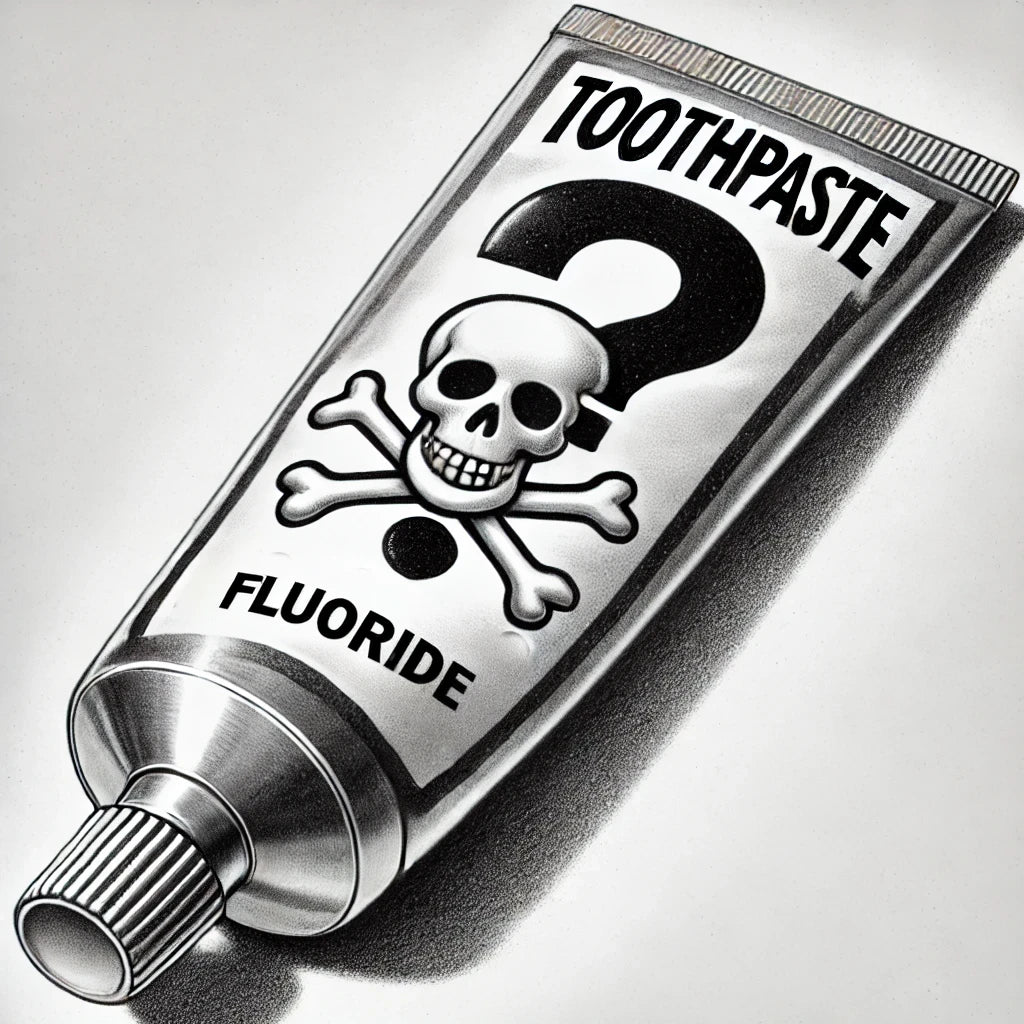
The History of Fluoride in Toothpaste: Exploring the Benefits, Risks, and Natural Alternatives
Share
Fluoride has been a key player in dental care for decades. Introduced into toothpaste in the 1950s, it quickly became the go-to ingredient for cavity prevention. Its ability to strengthen tooth enamel and reduce decay made it a staple in households worldwide. However, as awareness about potential health risks has grown, so too has the demand for alternatives that avoid the use of fluoride. Among the most popular fluoride-free alternatives are natural ingredients like bentonite clay and naturally mined sodium bicarbonate, both known for their cleansing and remineralizing properties. In this blog post, we’ll explore the history of fluoride in toothpaste, its benefits and potential risks, and how natural alternatives like bentonite clay and sodium bicarbonate are becoming the preferred choice for many concerned about the long-term impact of fluoride.
Fluoride’s Rise in Toothpaste: A Brief History
Fluoride’s introduction into dental care stemmed from early 20th-century discoveries that linked naturally occurring fluoride in water to lower rates of tooth decay. This sparked the idea of incorporating fluoride into toothpaste, with the first commercial fluoride toothpaste launched in 1955. By the 1960s, fluoride was widely adopted in oral care products, and municipalities began adding it to public water supplies, promoting it as a safe and effective measure to reduce cavities.
Fluoride works by remineralizing and strengthening the enamel, which helps protect teeth against decay-causing acids from food and bacteria. For many years, it was seen as an essential ingredient in toothpaste, particularly for children’s dental health.
The Benefits of Fluoride
Fluoride is effective at preventing tooth decay. By helping remineralize tooth enamel and strengthening teeth, it makes them more resistant to cavities. This has made fluoride a standard recommendation from dentists for decades, with studies showing a reduction in cavities by up to 40% when fluoride is used regularly.
Its ability to protect teeth, especially in children, has been viewed as an important public health achievement. Fluoride toothpaste is still recommended by most dental professionals, particularly in communities where access to dental care may be limited.
The Hidden Risks of Fluoride
Despite its reputation for cavity prevention, fluoride has a darker side that many are now beginning to consider more seriously. Overexposure to fluoride—whether through toothpaste, water, or other sources—can lead to various health problems.
Dental Fluorosis: One of the most visible consequences of fluoride overexposure is dental fluorosis, which manifests as white streaks or brown spots on the teeth. This occurs when children consume too much fluoride while their teeth are still developing. While fluorosis is primarily a cosmetic issue, it highlights the potential risks of fluoride overconsumption.
Neurotoxicity: Emerging studies suggest that fluoride may have neurotoxic effects, particularly in children. Some research has linked high fluoride intake to lower IQ levels and developmental delays, raising serious concerns about the impact of long-term exposure.
Thyroid Health: Fluoride has also been shown to interfere with thyroid function, particularly in individuals who are already at risk for thyroid issues. Over time, fluoride may reduce thyroid function, leading to symptoms such as fatigue, weight gain, and mood disorders.
Skeletal Fluorosis: Fluoride can accumulate in bones and lead to skeletal fluorosis, a condition that causes pain and stiffness in the joints. This risk, though more common in areas with highly fluoridated water, raises concerns about chronic low-level fluoride exposure.
Fluoride Toxicity: Ingesting fluoride toothpaste, particularly by children, can be dangerous. Swallowing large amounts of fluoride can lead to acute toxicity, with symptoms including nausea, vomiting, and even death in extreme cases.
Natural Alternatives to Fluoride: Bentonite Clay and Sodium Bicarbonate
With the growing awareness of the risks associated with fluoride, many people are turning to natural alternatives that can effectively clean and strengthen teeth without the potential side effects. Two of the most popular natural ingredients in fluoride-free toothpaste are bentonite clay and naturally mined sodium bicarbonate.
Bentonite Clay: A Remineralizing Powerhouse
Bentonite clay has been used for centuries in both skincare and oral health. This naturally occurring clay is rich in minerals like calcium, magnesium, and silica, which help to remineralize teeth and strengthen enamel. Bentonite clay also has powerful detoxifying properties, binding to toxins and impurities in the mouth to help reduce harmful bacteria and keep teeth and gums clean.
Its mild abrasiveness makes bentonite clay an excellent ingredient for polishing teeth without causing damage to the enamel. Additionally, bentonite clay’s alkalinity helps to balance the pH levels in the mouth, creating an environment that’s less conducive to decay-causing bacteria.
Naturally Mined Sodium Bicarbonate: Nature’s Tooth Cleaner
Sodium bicarbonate, commonly known as baking soda, is another popular alternative to fluoride toothpaste. Naturally mined sodium bicarbonate has excellent cleaning properties and can gently scrub away surface stains on the teeth. Its mild abrasiveness helps remove plaque without damaging enamel, while its alkalinity helps neutralize acids that contribute to tooth decay.
Baking soda is also known for its ability to maintain a healthy oral environment by balancing the mouth's pH. In addition to its whitening and plaque-reducing benefits, sodium bicarbonate is an excellent alternative for those who want to avoid fluoride while still maintaining strong, healthy teeth.
Fluoride-Free Alternatives: Are They Effective?
The evidence supporting natural alternatives like bentonite clay and sodium bicarbonate is growing. These ingredients not only provide gentle cleansing but also contribute to the remineralization of enamel, a critical aspect of cavity prevention. Many who switch to fluoride-free options report healthier gums, reduced sensitivity, and fewer issues with dental staining, without the worry of overexposure to potentially harmful chemicals.
For those looking to avoid fluoride altogether, a combination of bentonite clay and sodium bicarbonate in a natural toothpaste offers an effective, safe alternative that still promotes good oral hygiene. Many natural toothpastes also incorporate other beneficial ingredients, such as xylitol, which helps to further protect against decay by inhibiting the growth of harmful bacteria.
Conclusion: Rethinking Fluoride and Embracing Natural Alternatives
While fluoride has undoubtedly played a significant role in reducing cavities over the past century, the growing awareness of its risks should give us pause. Dental fluorosis, potential neurotoxicity, and thyroid issues are just some of the concerns associated with long-term fluoride use. Moreover, with many individuals being exposed to fluoride through water, food, and dental products, the risk of overexposure is higher than ever.
Natural alternatives like bentonite clay and naturally mined sodium bicarbonate offer effective, fluoride-free solutions for those looking to maintain strong, healthy teeth without the risks. These natural ingredients not only clean and whiten teeth but also provide important remineralizing benefits, making them a viable option for anyone seeking a more holistic approach to oral health.
As we continue to learn more about the long-term effects of fluoride, it’s worth considering whether this common ingredient is still necessary in our daily routines—or if nature’s own ingredients may offer a safer, healthier alternative.
